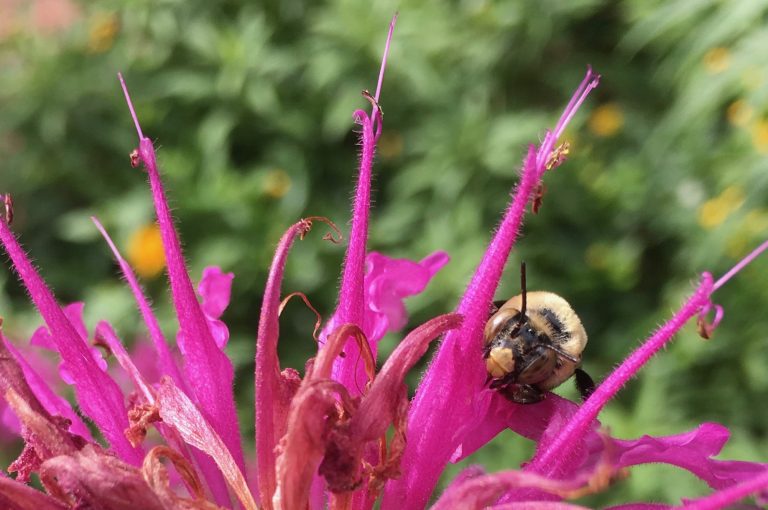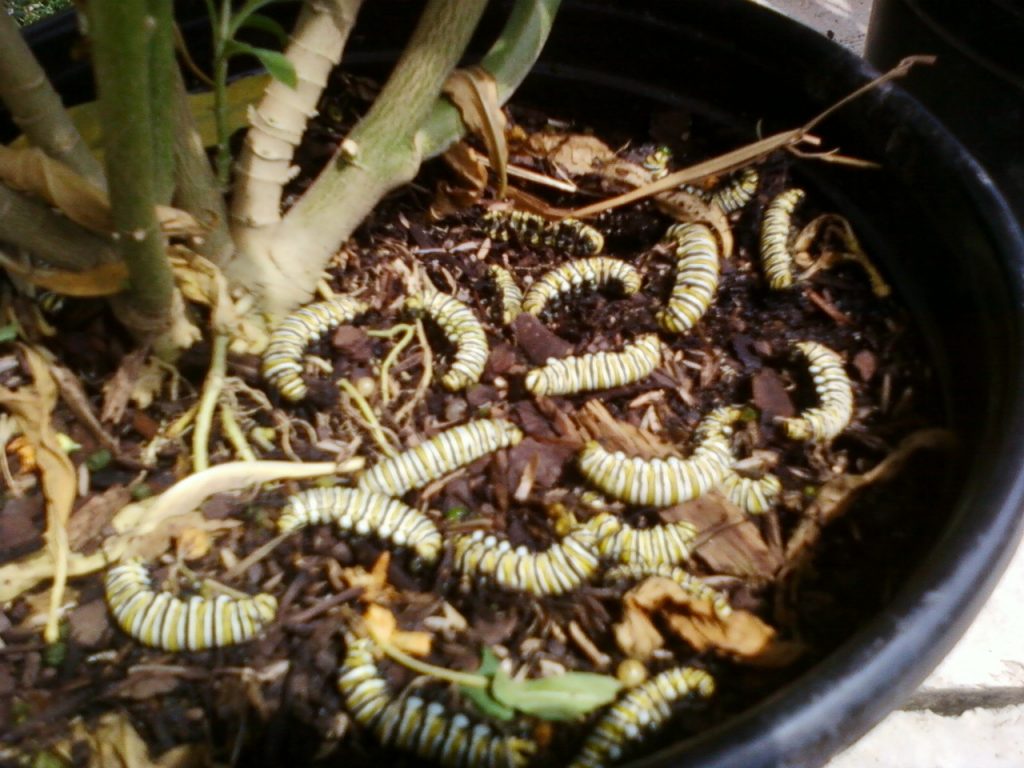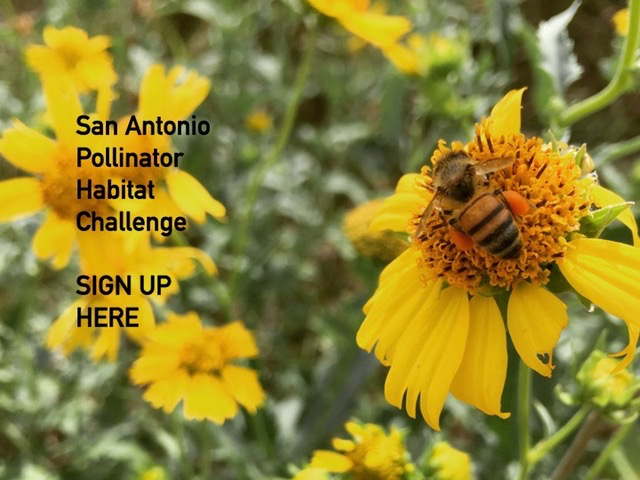SAN ANTONIO — The Alamo City celebrates its Tricentennial birthday this year and the Texas Butterfly Ranch is comemmorating the occasion by working with our favorite community collaborators to plant 300 pollinator habitats in honor of San Antonio’s 300th birthday. We’re calling it 300for300.
Why? Because butterflies, bees, bats and birds, the unpaid workforce that makes one of every three bites of our food possible, are under siege. Habitat loss, pesticide abuse, and climate change are creating a wicked storm of obstacles that prevent them from thriving.

Mammoth Sunflower seed head provides dozens of nectaring possibilities for a Monarch butterfly. Photo by Monika Maeckle
San Antonio Mayor Ron Nirenberg pledged to execute a community wide pollinator garden initiative when he recommitted to the National Wildlife Federation’s Mayor’s Monarch Pledge last fall. And because it takes a village to bring back pollinator habitat, we feel obliged to help him live up to his words.
Three hundred pollinator gardens may sound daunting, but San Antonio has 10 city council districts representing its 1.5 million residents. If each district plants 30 pollinator habitats, we’ll hit 300 in no time.
It makes sense for San Antonio. We’re the top tourism destination in Texas. Recently, we were also named one of the top culinary/food destinations in the country. It’s in our interest to support the insects and other wildlife that provide more than $20 billion a year in free ecosystem services. These creatures keep our fine wining and dining affordable.
San Antonio is famous for its hospitality. Our River Walk and the Alamo consistently rank in the Top 10 tourism destinations in the state. So let’s extend a warm welcome to the pollinators that live among us and seasonally pass through the “Texas Funnel” each year. Together, we can create an environment for pollinators to rest, refuel, and reproduce.

Bumblebee on bee balm. Photo by Monika Maeckle
Wildlife friendly habitats can be beautiful and low maintenance, once established. They save water and don’t need pesticides. You can grow one in your front or back yard, carve a pocket prairie out of your lawn, or transform a whisky barrel or large pot into a pollinator pitstop. Size doesn’t matter as much as plant diversity, seasonal blooms and host plants that keep pollinators thriving.
Minimum requirements for a pollinator habitat:
- At least six different native and/or well adapted, noninvasive plants, including
- At least two larval host plants (the plants on which butterflies lay their eggs)
- At least two spring nectar plants (plants that bloom in the spring, providing energy/fuel)
- At least two autumn nectar plants (plants that bloom in the fall, providing energy/fuel)
- A diverse mix of spring, summer and fall blooms.
We also strongly encourage:
- NO pesticides* in your habitat
- Mulching the garden or installing dense plugs of plants to choke out undesirable weeds and conserve moisture
- If using the non-native Tropical Milkweed (Asclepias curassavica) follow best practice and cut it back in late summer to keep migrating monarch butterflies moving and avoid possible disease build-up
- Have a recessed area where water can puddle so butterflies can hydrate and take up necessary nutrients, and
- Consider dead plants and spent seed heads as overwintering shelters for moths, butterflies, and other wildlife. Chop them down in late winter/early spring until after you’ve inspected them for eggs, cocoons and other signs of life.
Ready to pledge to plant a pollinator habitat? Sign up here. Also check out our resources page for ideas and guidance.
We, the bees, butterflies, bats, birds and beetles thank you for your commitment to help pollinators. And gracias to our community collaborators for helping us pollinate this idea: TBG Partners, HEB, the Pearl, GardenStyleSA.com, a project of the San Antonio Water System, Native Plant Society of Texas, Bexar County Master Gardeners, Gardening Volunteers of South Texas, San Antonio River Authority and Green Spaces Alliance.
This initiative is a work-in-progress and we welcome your input. Feel free to leave a comment below to recommend other resources or ask for help. We’re planning to map the gardens around the city, which is why we ask for your address when you sign up. So please join us at the link above and help us track our progress. Yard signs coming soon.

Don’t let this happen to you. Dead Monarch caterpillars fall victim to pesticide laced milkweed. Photo by Sharon Sander
*KNOW YOUR GROWERS! Ask the plant seller: Have these plants been treated with systemic pesticides? Systemic pesticides can linger in plant biomass for months and when consumed by caterpillars (future butterflies and moths), will kill the creatures. Read more here.
Related posts:
- Mostly native butterfly garden outperforms lawn every time
- How to plan and plant a successful pollinator garden
- Tropical milkweed: to plant it or not, it’s not a simple question
- Late season monarch butterflies create gardening quandary
- Pledge to plant a pollinator garden in San Antonio
Like what you’re reading? Follow butterfly and native plant news at the Texas Butterfly Ranch, like us on Facebook, or follow us on Twitter, @monikam.



Leave A Comment